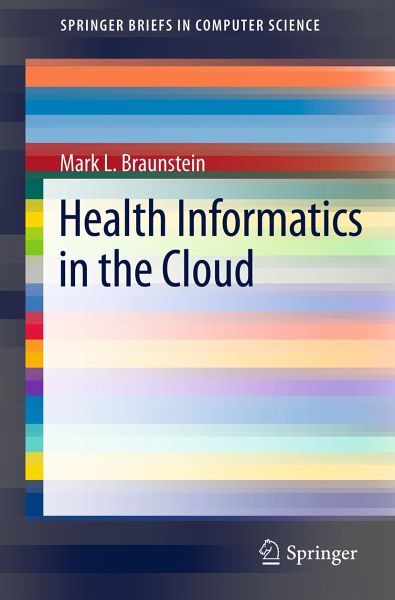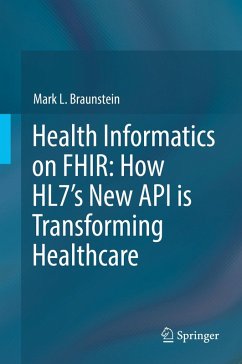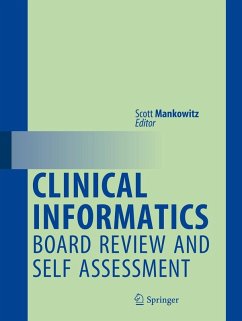
Health Informatics in the Cloud (eBook, PDF)
Versandkostenfrei!
Sofort per Download lieferbar
40,95 €
inkl. MwSt.
Weitere Ausgaben:

PAYBACK Punkte
20 °P sammeln!
Despite its high cost, the US healthcare system produces relatively short life spans, and is wasteful, inefficient and has serious safety and quality issues. While other industries have surmounted similar challenges by transforming themselves through information technology, healthcare lags behind. Major reasons are that our approaches to care delivery and financial incentives were designed for a bygone era. Beyond that the technology offered to practitioners has often been overly expensive, poorly designed, overly proprietary, hard to implement and difficult to use. Spurred by a unique, one-ti...
Despite its high cost, the US healthcare system produces relatively short life spans, and is wasteful, inefficient and has serious safety and quality issues. While other industries have surmounted similar challenges by transforming themselves through information technology, healthcare lags behind. Major reasons are that our approaches to care delivery and financial incentives were designed for a bygone era. Beyond that the technology offered to practitioners has often been overly expensive, poorly designed, overly proprietary, hard to implement and difficult to use. Spurred by a unique, one-time Federal stimulus and the new mobile, wireless and cloud technologies now available, this landscape is rapidly changing. To succeed going forward practitioners, and those interested in entering the field, need to understand the new driving forces and have a basic understanding of contemporary clinical informatics. Practitioners, in particular, need to understand the alternative technologies and approaches available for their use in individual patient care and more continuous management of their chronic disease patients. To efficiently meet these needs, this book provides an introduction to the rationale for care transformation through clinical informatics; its application to patient care outside of hospitals; and a look at its future. Key points are illustrated throughout by actual examples of open source and commercial health IT products and services. While written with practitioners and students entering the field of clinical informatics in mind, the book eschews technical terminology and is easily accessible by the lay reader not proficient in clinical medicine or information technology.
Dieser Download kann aus rechtlichen Gründen nur mit Rechnungsadresse in A, B, BG, CY, CZ, D, DK, EW, E, FIN, F, GR, HR, H, IRL, I, LT, L, LR, M, NL, PL, P, R, S, SLO, SK ausgeliefert werden.













